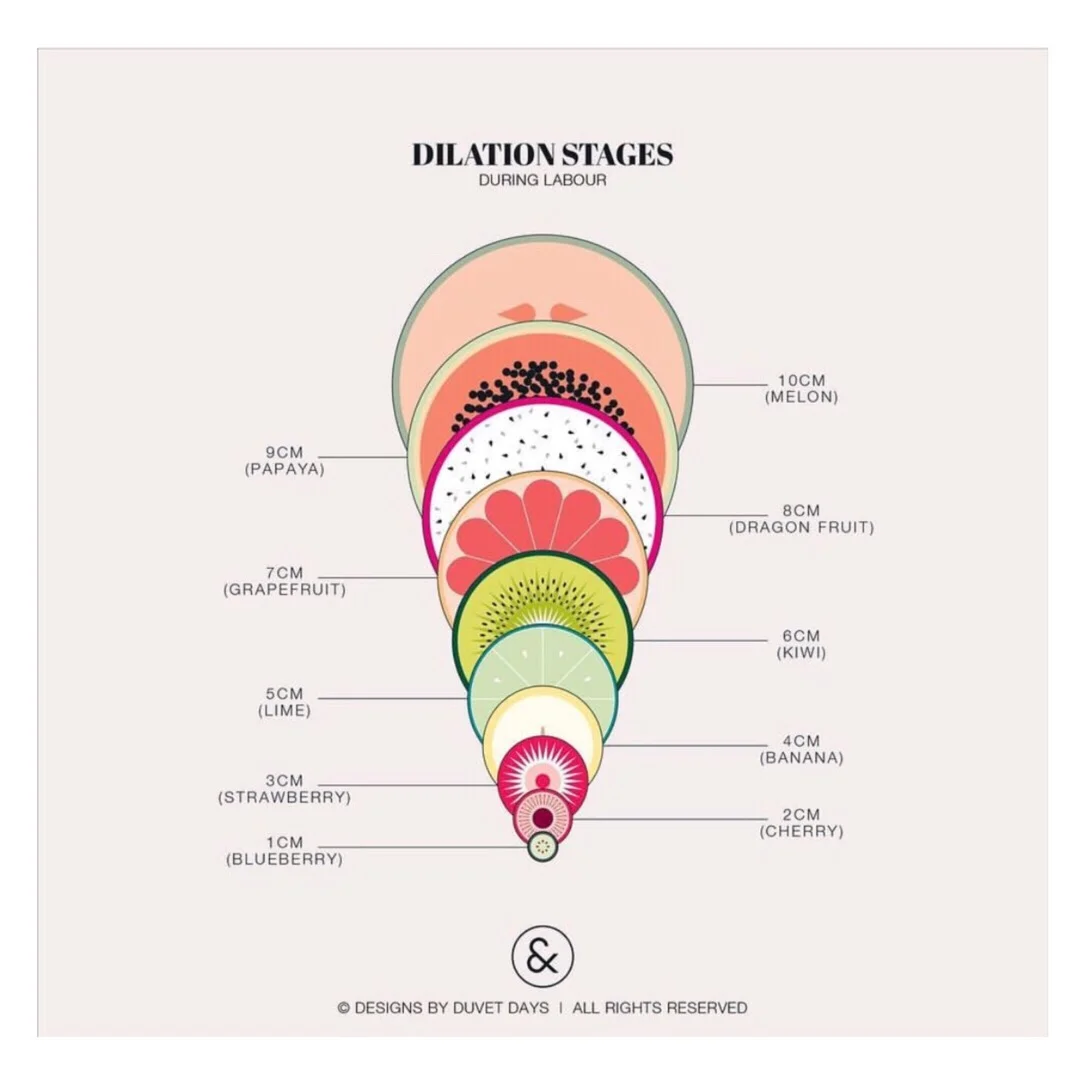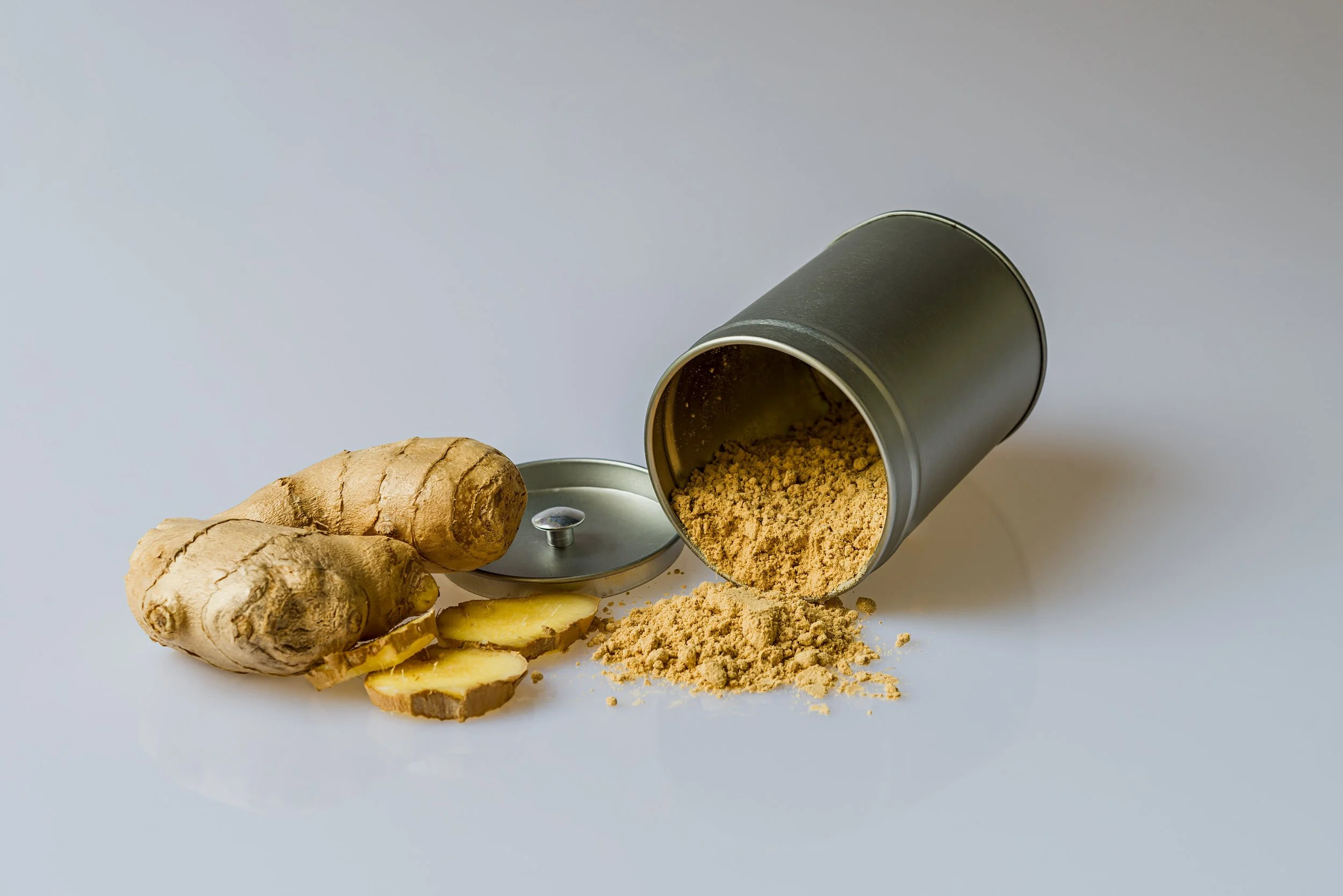Dilation of the Cervix :: Play by Play
D I L A T I O N
Understanding the stages of labor is a key part of your birth preparation.⠀⠀⠀⠀⠀⠀⠀
S T A G E • O N E
Contractions begin, the cervix dilates, and the baby moves down in the pelvis. Stage one is complete when the cervix has dilated to 10 centimeters (cm). Late in pregnancy, the cervix may have already dilated several centimeters before a woman experiences any symptoms of labor.
🌻stage 1: E A R L Y labor {0-3 cm}⠀⠀⠀⠀
Some women have difficulty telling whether labor has begun. Contractions in early labor are often mild and irregular, growing steadily more intense as the labor progresses and the cervix dilates.⠀⠀
This increase in intensity may take a few hours or many days. Knowing whether this is actual labor can help people to prepare.
During true labor, a person's contractions:
are not just on one side of the body⠀⠀⠀⠀⠀⠀⠀⠀⠀
begin at the top of the uterus, feel like they are pushing down⠀⠀⠀⠀⠀⠀⠀⠀⠀
get more intense and regular with time⠀⠀⠀⠀⠀⠀⠀⠀⠀
do not stop with rest or taking a warm shower
typically mild and somewhat irregular but become progressively stronger and more frequent
will last about 30-45 seconds, giving you 5-30 minutes of rest between contractions
What to expect:
Early labor will last approximately 8-12 hours
Your cervix will efface and dilate to 3 cm
Your water might break – this is known as amniotic sac rupture and can happen anytime within the first stage of labor
When experiencing contractions, notice if they are:
Growing more intense
Following a regular pattern
Lasting longer
Becoming closer together
When your water breaks (amniotic sac rupture), note the following:
Color of fluid
Odor of fluid
Time rupture occurred
Tips for the support person:
Practice timing contractions
Be a calming influence
Offer comfort, reassurance, and support
Suggest simple activities that draw her focus from the labor
Keep up your own strength. You will need it!
During this phase, you should just try to relax. Try to enjoy the comfort of the familiar surroundings at home. If early labor occurs during the day, do some simple routines around the house.
Keep yourself occupied while conserving your energy. Drink plenty of water and eat small snacks. Keep track of the time of your contractions. If early labor begins during the night, it is a good idea to try to get some sleep. If you are unable to fall asleep, focus on doing some light activities like cleaning out your closet, packing your bag, or making sack lunches for the next day. {American pregnancy}
🌻stage 1: A C T I V E labor phase {4-8 cm}
Labor contractions become more intense and regular during active labor. Changing positions, moving, and remaining hydrated can help with the pain of active labor.
Now is time for you to head to the hospital or birth center. Your contractions will be stronger, longer and closer together. It is very important that you have plenty of support. It is also a good time to start your breathing techniques and try a few relaxation exercises between contractions.
You should switch positions often during this time. You might want to try walking or taking a warm bath. Continue to drink plenty of water and urinate periodically.
What to expect:
Active labor will last about 3-5 hours
Your cervix will dilate from 4cm to 7cm
Contractions during this phase will last about 45-60 secondswith 3-5 minutes rest in between
Contractions will feel stronger and longer
This is usually the time to head to the hospital or birth center
Tips for the support person:
Give the mother your undivided attention
Offer her verbal reassurance and encouragement
Massage her abdomen and lower back
Keep track of the contractions (if she is being monitored, find out how the machine works)
Go through the breathing techniques with her
Help make her comfortable (prop pillows, get her water, apply touch)
Remind her to change positions frequently (go with her on a walk or offer her a bath)
Provide distractions from labor such as music, reading a book or playing a simple card game
Don’t think that there is something wrong if she is not responding to you
⠀⠀
🌻stage 1: T R A N S I T I O N phase {8-10 cm}
Ttransition is the most challenging stage and the shortest. Some begin feeling an urge to push at this stage. It is also common to feel overwhelmed, hopeless, or unable to cope with the pain⠀⠀⠀⠀⠀⠀⠀⠀⠀
⠀⠀⠀⠀⠀⠀⠀⠀⠀
Moving, changing positions, and visualization exercises can help. The cervix continues dilating and transition ends when the cervix is fully dilated⠀{continued in comments}
During this phase, the mother will rely heavily on her support person. This is the most challenging phase, but it is also the shortest. Try to think “one contraction at a time” (this may be hard to do if the contractions are very close together). Remember how far you have already come, and when you feel an urge to push, tell your health care provider.
What to expect:
Transition will last about 30 min-2 hrs
Your cervix will dilate from 8cm to 10cm
Contractions during this phase will last about 60-90 seconds with a 30 second-2 minute rest in between
Contractions are long, strong, intense, and can overlap
This is the hardest phase but also the shortest
You might experience hot flashes, chills, nausea or vomiting
Tips for the support person:
Offer lots of encouragement and praise
Avoid small talk
Continue breathing with her
Help guide her through her contractions with encouragement
Encourage her to relax between contractions
Don’t think that there is something wrong if she seems to be angry – it is a normal part of transition
S T A G E • T W O
🌻pushing and birth
Women often feel a strong urge to push. This stage ends with the birth of the baby .
Once the cervix has reached 10 cm, it is time to push the baby out. Contractions continue but also produce a strong urge to push. This urge might feel like an intense need to have a bowel movement.
This stage can last anywhere from a few minutes to a few hours. It is often longer for those giving birth for the first time.
Historically, doctors told women to push according to a schedule, to count to 10, and to remain on their backs. Today, with evidence based birth, most providers advise women to push according to their body's cues and for as long as feels comfortable.
Pushing from a standing or squatting position may also help speed things along. Allowing people to push from a range of positions gives the medical staff better access to the woman and baby should they need to assist with the delivery for any reason.
As a woman delivers the baby, she may feel an intense burning and stretching as her vagina and perineum stretch to accommodate the baby. This sensation typically lasts just a few minutes, though some women tear during this process. {medical news today}
S T A G E • T H R E E
🌻Contractions push out the placenta
This stage ends with the delivery of the placenta, usually within a few minutes after the birth. The third stage of labor is perhaps the most forgotten phase. Even though the "main event" of birth has occurred with the birth of the baby, a woman's body still has important work to do. In this stage, she’s delivering the placenta.
A few minutes after the birth, a woman may experience weaker contractions. After a contraction or two, the body should expel the placenta.
If the body does not entirely expel the placenta, a doctor or midwife may have to help deliver it. Sometimes, they will give a woman an injection of synthetic oxytocin to speed up delivery and prevent excessive bleeding.
Shortly after delivery, the cervix begins contracting back down to its previous size. This process can take several days to several weeks.
As the uterus and cervix shrink, many women will feel some contractions. Most women bleed for several weeks after giving birth.





